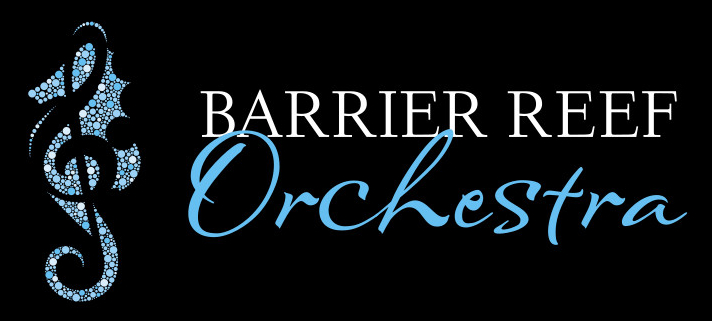Review: New Worlds on 16th March 2019
Townsville gave its adopted prodigal son, Ukrainian conductor Theodore “Ted” Kuchar a warm and appropriate standing ovation at the conclusion of Saturday night’s performance with the city’s 60-piece Barrier Reef Orchestra.
Now principal conductor of the Ukrainian Festival Orchestra, he conducts orchestras all over the world. We are therefore fortunate to have a conductor of his calibre able to come “home” where he spent 17 years of his working life as founding Artistic Director of the Australian Festival Chamber of Music. The legacy of his time in Townsville is celebrated annually with the awarding of the Theodore Kuchar Music Scholarship, given to promising Townsville music students. It was additionally poignant that four recipients of the scholarship were playing in the orchestra that night.
Townsville’s Civic Theatre – the customary venue for the orchestral performances – is undergoing repairs after the recent floods, which has meant that many organisations have had to seek alternative venues, which are like the proverbial hen’s teeth. It is a tribute to the never-say-die spirit that exists in this city that alternative venues have had to be found. The undamaged venues vary in suitability and facilities, so it was with some trepidation that I went along to the Sir George Kneipp Auditorium at James Cook University to attend this concert.
Essentially a lecture hall, it may indeed have been the first time an orchestra of this size has ever performed there – and it may not be the last, because the acoustics of the venue were such a pleasant and unexpected surprise. It was a “warm room” from a sound perspective with not even the hint of an echo, so it was a pleasure to experience the waves of “pure” non-processed sound.
With a concert entitled New Worlds, the obligatory centrepiece would have to be Antonin Dvořák’s New World Symphony – written in 1893 and one of the world’s most loved symphonies. Kuchar entertained the audience with some interesting information about the numbering of the symphony – known during the composer’s lifetime and for many years as Dvořák’s Symphony No 5 – it is now known as Symphony No 9. It was only after his death that four unpublished symphonies were discovered that led to a latter-day renumbering of the works.
The beauty of classical music is that once the music enters your soul, it invariably elicits some sort of emotional memory and response. And for me the Largo movement of this symphony always evokes poignant memories of when I was first introduced to this music when I was a teenager, and I was not to be disappointed – there really is nothing to beat the experience of a live orchestra.
Conductor Kuchar is so familiar with this work – he did not use any music to guide him. Instead he threw his considerable talent to bring an emotional flavour into his manner of conducting the orchestra. Under his tutelage, a particular pleasure for me was to see local musicians highlighted in various aspects of the work. Of course, there could not be a better example of teamwork than an orchestra working in such harmony, but there were some outstanding solo performances with the framework of the pieces performed.
The oboe solo in the Largo movement of The New World, performed by Francesca Adcock was sublime (if this was a jazz concert she would have received a spontaneous ovation), and also impressive was the remarkable percussion work of Jade Pagan.
The second half of the program was dedicated to 20th century Latin American composers and I have to admit that I had not heard of any of the pieces, but what exciting work it was – blending Latin rhythms ranging from the malambo dance of the Argentine gaucho to inspiration from Cuban dance music and the unofficial second national Mexican anthem. The three pieces were characterised by great use of percussion (considerably enlarged with six players for these works) and the use of the brass and woodwind sections.
Kuchar told us that that we owe the introduction of this music to the world’s (and YouTube’s) most famous youth orchestra, Venezuela’s Simon Bolivar Symphony Orchestra, who have championed Latin American composers.
The first piece was a Suite from Estancia, from a one-act ballet by Argentine composer Alberto Ginastera, followed by Huapango by Mexican composer Jose Pablo Moncayo. The fact that the title means “on top of a wooden plank” or, more poetically “on the dance floor” will give a clear indication of the rhythms incorporated in this engaging piece of music.
The final piece of the night was the lively Danzon No 2 for Orchestra from Mexican composer Arturo Marquez. Solo work from the brass section – particularly Arthur Florence on trumpet and Lachlan Cutler on trombone – was exciting and stimulating. (I was so impressed with this unfamiliar work that first thing when I got home was to find a recording on YouTube.)
It was a balanced and successful concert – a blend of the loved and familiar with the introduction of something new and exciting from this amazing orchestra we have in our midst. These words were echoed in conclusion by conductor Kuchar who paid tribute at the end of the evening not only to impressive talents in the orchestra, but also to the people behind the scenes who make it happen.
Trevor Keeling
[This Review also appeared in Stage Whispers and shorter version in Townsville Bulletin].